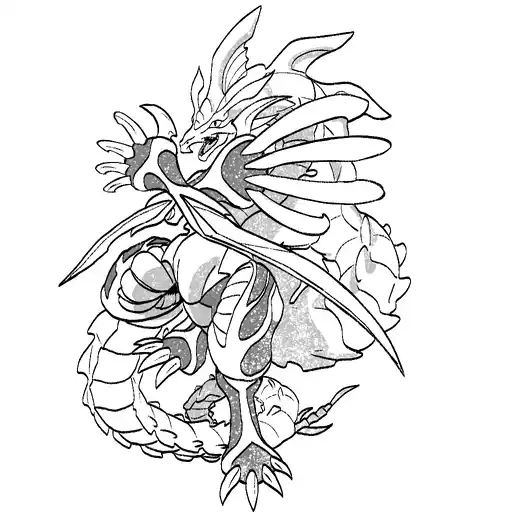Introduction
In the dynamic world of manga, few stories capture the intensity of human emotion and the unpredictability of life quite like “Gang King.” At its core, this captivating series revolves around Satō, an unsuspecting corporate worker whose serene existence is abruptly shattered by an unforeseen incident. This event sparks an intense emotional response, leading Satō down a path of rage and ultimately, redemption. “Gang King” is not just a tale of personal turmoil; it reflects broader themes of loss, justice, and the search for one’s identity amid chaos. As we delve deeper into this narrative, readers will uncover the layers of Satō’s journey and the cultural significance embedded within the manga’s pages.
Background and Context
The Genesis of “Gang King”
“Gang King,” originally launched by Yanauchi, made its debut in the prestigious “Young King” magazine by Shonengahosha, running from 2003 to 2013. Over this decade, it captured the hearts of many with its raw portrayal of human emotions and societal challenges. In a strategic move, the manga transitioned to Kodansha in 2016, finding new life in “Magazine Special,” and later appearing in “Bessatsu Shōnen Magazine” and “Evening” until its conclusion in April 2021. This transition not only expanded its reach but also allowed the story to evolve alongside its audience.
Cultural Significance and Themes
The narrative of “Gang King” is deeply rooted in Japanese culture, exploring themes of honor, revenge, and personal growth. The concept of ‘Giri’ (duty) and ‘Ninjō’ (human emotion) often clash within Satō, reflecting the internal struggle many individuals face in balancing societal expectations with personal desires. This cultural backdrop adds depth to the story, making it relatable to both Japanese audiences and international readers who appreciate the universal nature of its themes.
Main Insights on “Gang King”
Satō’s Transformation: From Corporate Worker to Avenger
At the heart of “Gang King” is Satō’s transformation. Initially portrayed as a typical salaryman, Satō’s life takes a drastic turn following a catastrophic event that leaves him grappling with loss and fury. This transformation is not just physical but emotional and psychological, depicting the profound impact of trauma on an individual’s psyche. Through Satō’s journey, the manga explores the concept of ‘kizuna’ or bonds, emphasizing the importance of relationships in healing and personal growth.
The Role of Rage: A Double-Edged Sword
Rage, a central theme in “Gang King,” serves as both a catalyst for action and a barrier to peace. Satō’s anger propels him into a world of violence and retribution, providing temporary relief from his grief. However, it also isolates him from those he loves, highlighting the destructive nature of unchecked emotions. This dichotomy is a powerful reminder of the importance of emotional regulation and the dangers of allowing anger to dictate one’s actions.
Redemption and the Path to Healing
Despite the darkness that engulfs Satō, “Gang King” is ultimately a story of redemption. Through his interactions with others and his introspective journey, Satō learns the value of forgiveness and the power of letting go. This path to healing is portrayed with authenticity, reflecting real-life struggles and the resilience of the human spirit. The manga encourages readers to confront their own inner demons and find solace in connection and understanding.
Challenges and Opportunities
Misinterpretations of Rage in Manga
One of the challenges “Gang King” faces is the potential for misinterpretation, particularly regarding its portrayal of rage. While the manga aims to depict the complexity of human emotions, some readers may perceive Satō’s actions as glorifying violence. It is crucial for audiences to recognize the nuanced storytelling and the underlying message of transformation and redemption.
Opportunities for Cultural Exchange
“Gang King” presents a unique opportunity for cultural exchange, offering international readers a glimpse into Japanese societal values and emotional narratives. As Kodansha USA Publishing releases the manga in English, it opens doors for cross-cultural dialogue and appreciation of Japanese storytelling. This exchange enriches the global manga community, fostering a deeper understanding of diverse cultural experiences.
Future Outlook
The Evolving Landscape of Manga
As the manga industry continues to evolve, stories like “Gang King” are poised to influence future narratives. The themes of emotional resilience and personal growth resonate with contemporary audiences, encouraging creators to explore similar topics. Additionally, technological advancements and digital platforms offer new ways to engage with manga, broadening its reach and impact.
The Growing Influence of Japanese Culture
Japanese culture, with its rich history and unique perspectives, continues to captivate global audiences. “Gang King” contributes to this growing influence, showcasing the power of storytelling in bridging cultural gaps. As more readers discover and appreciate the intricacies of Japanese manga, the potential for cultural exchange and mutual respect increases, paving the way for a more interconnected world.
Conclusion
In “Gang King,” Satō’s journey from a corporate worker to a figure of rage and redemption encapsulates the complexities of human emotion and the transformative power of storytelling. This manga not only entertains but also inspires readers to reflect on their own lives, encouraging introspection and growth. As we close this exploration of Satō’s world, we are reminded of the resilience of the human spirit and the importance of connection in overcoming adversity. Whether you are a longtime fan or a newcomer to the series, “Gang King” offers valuable lessons and a profound appreciation for the art of manga.





